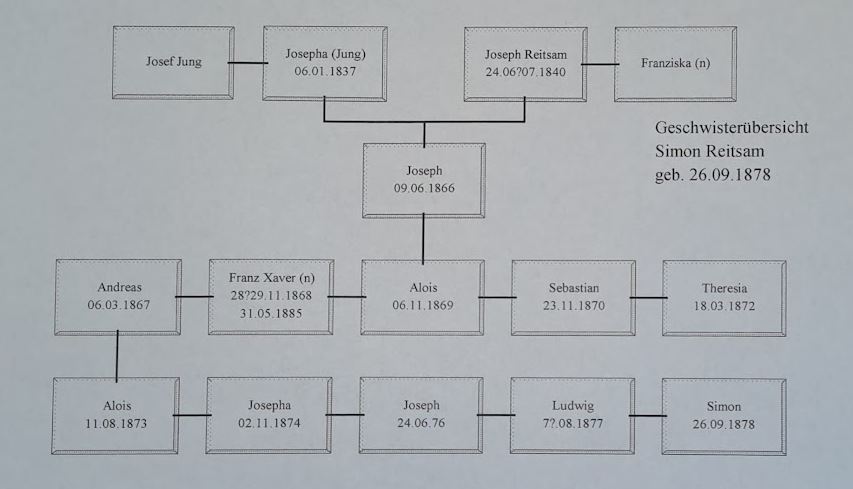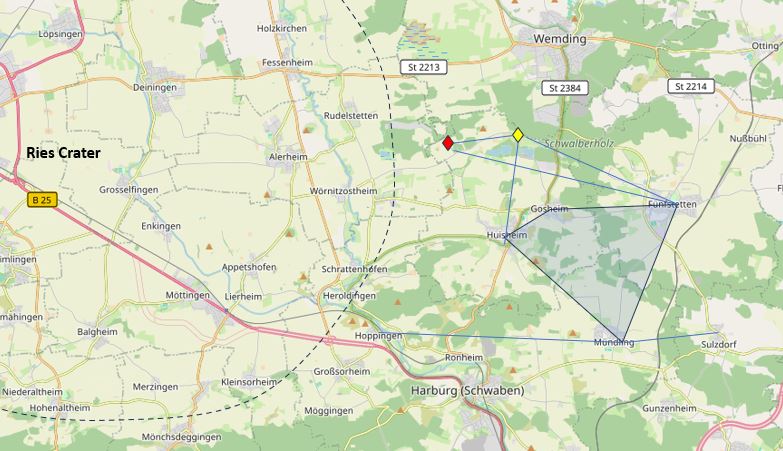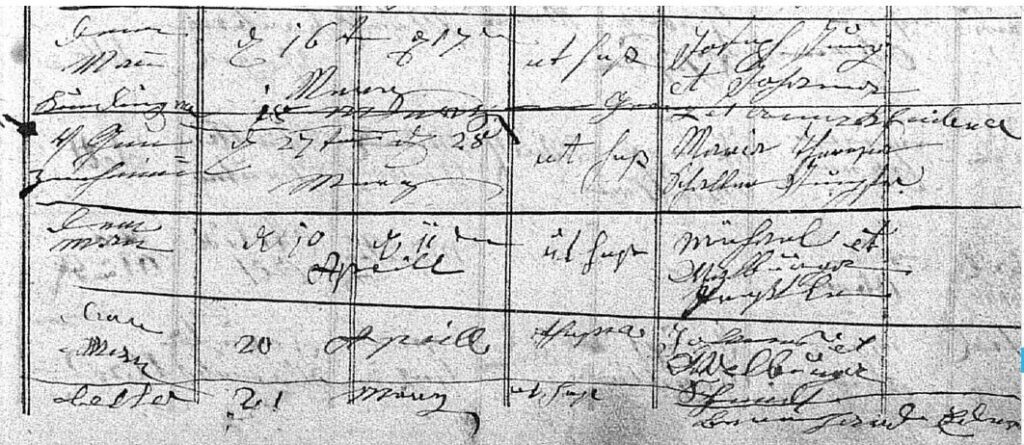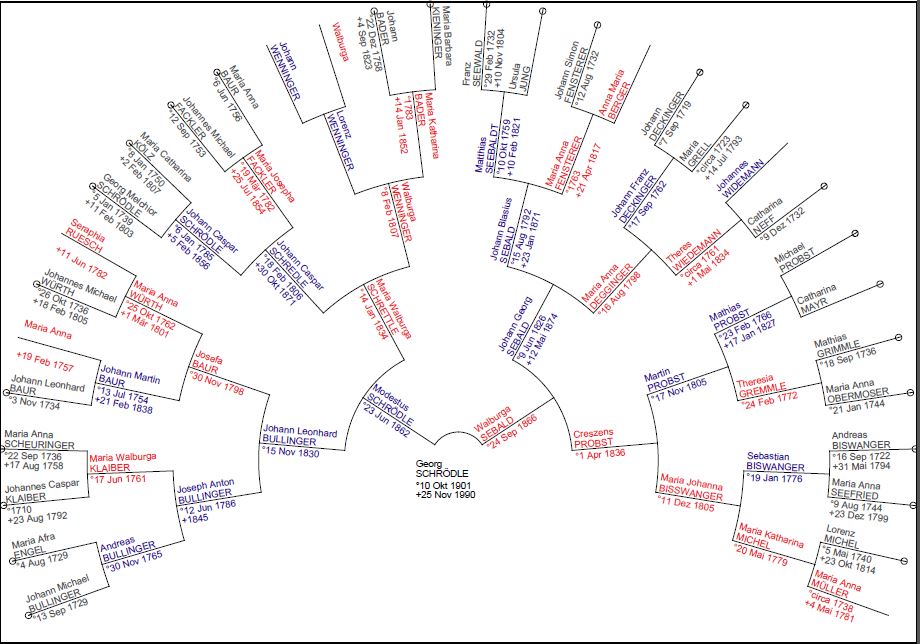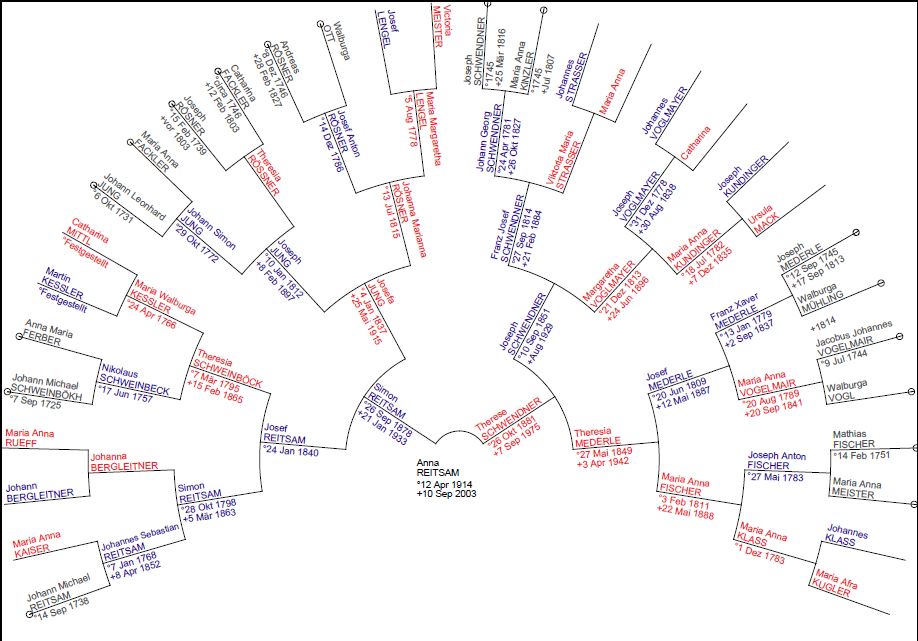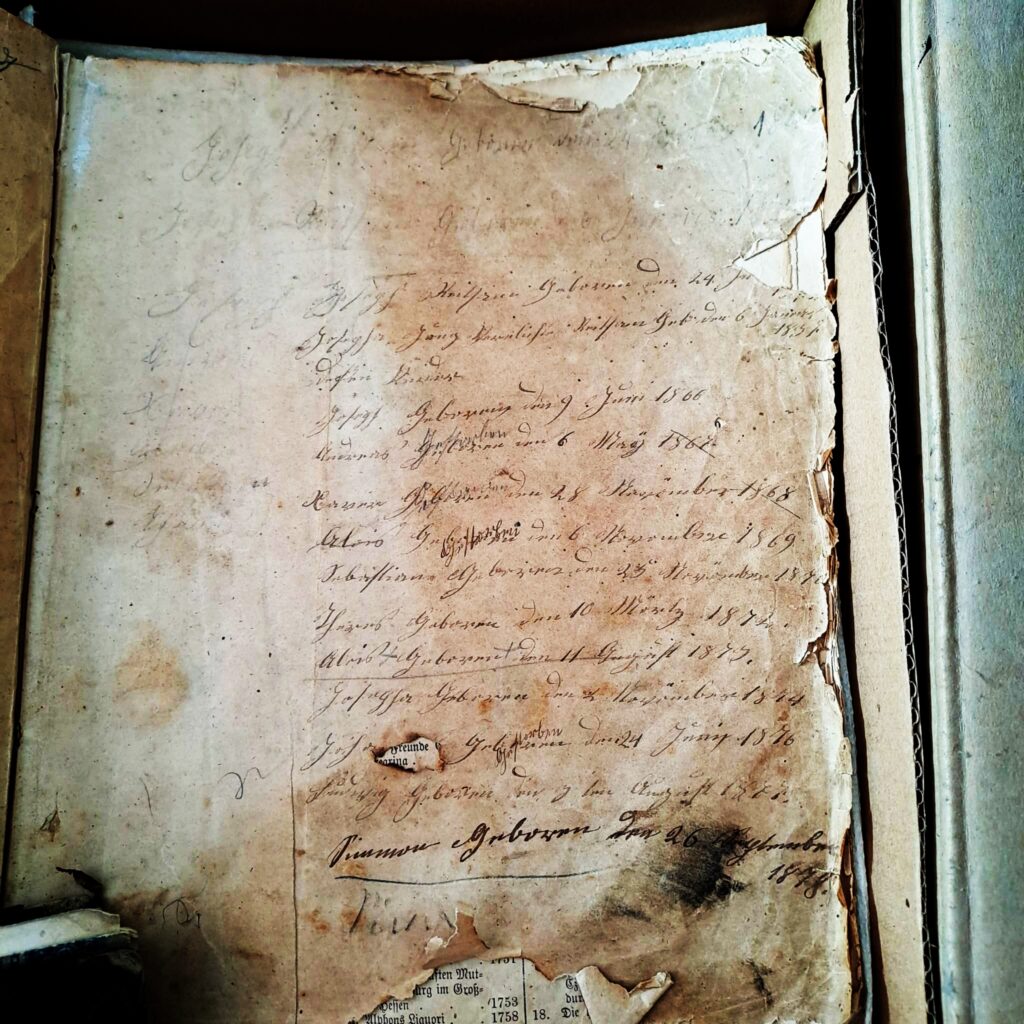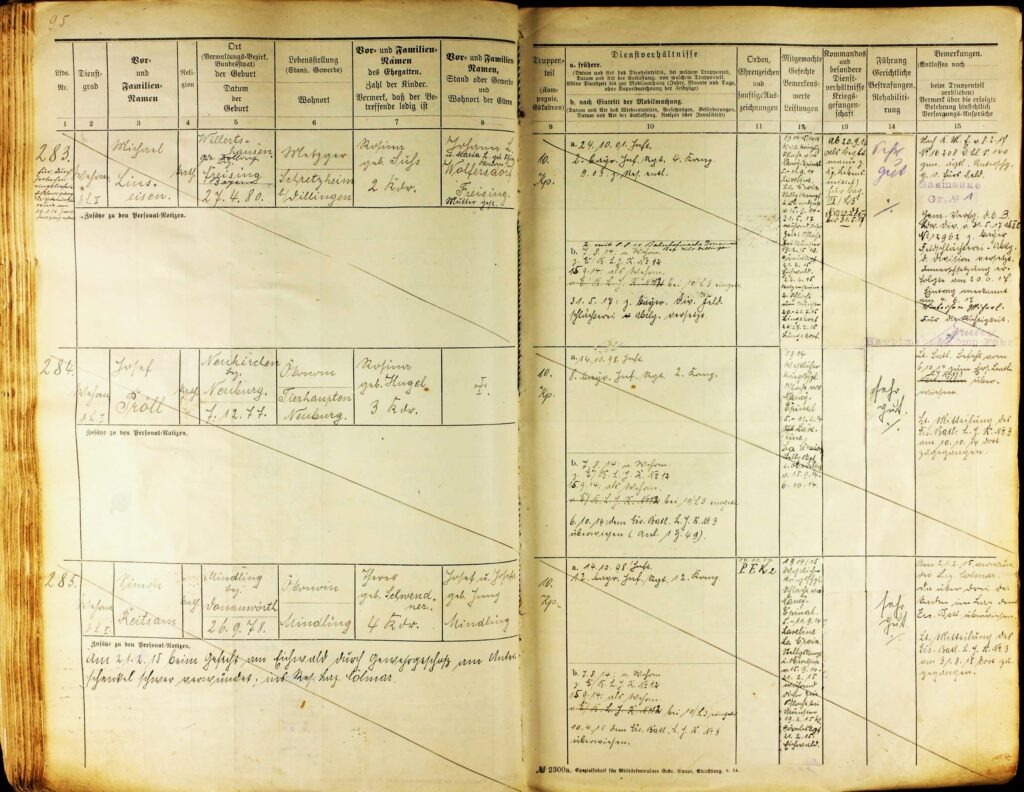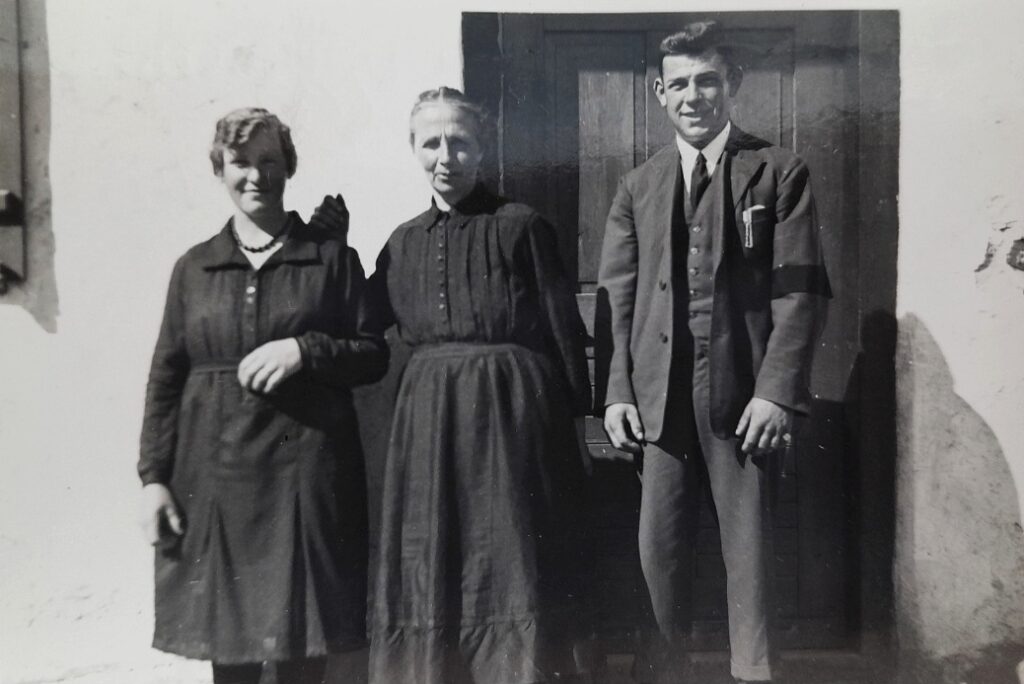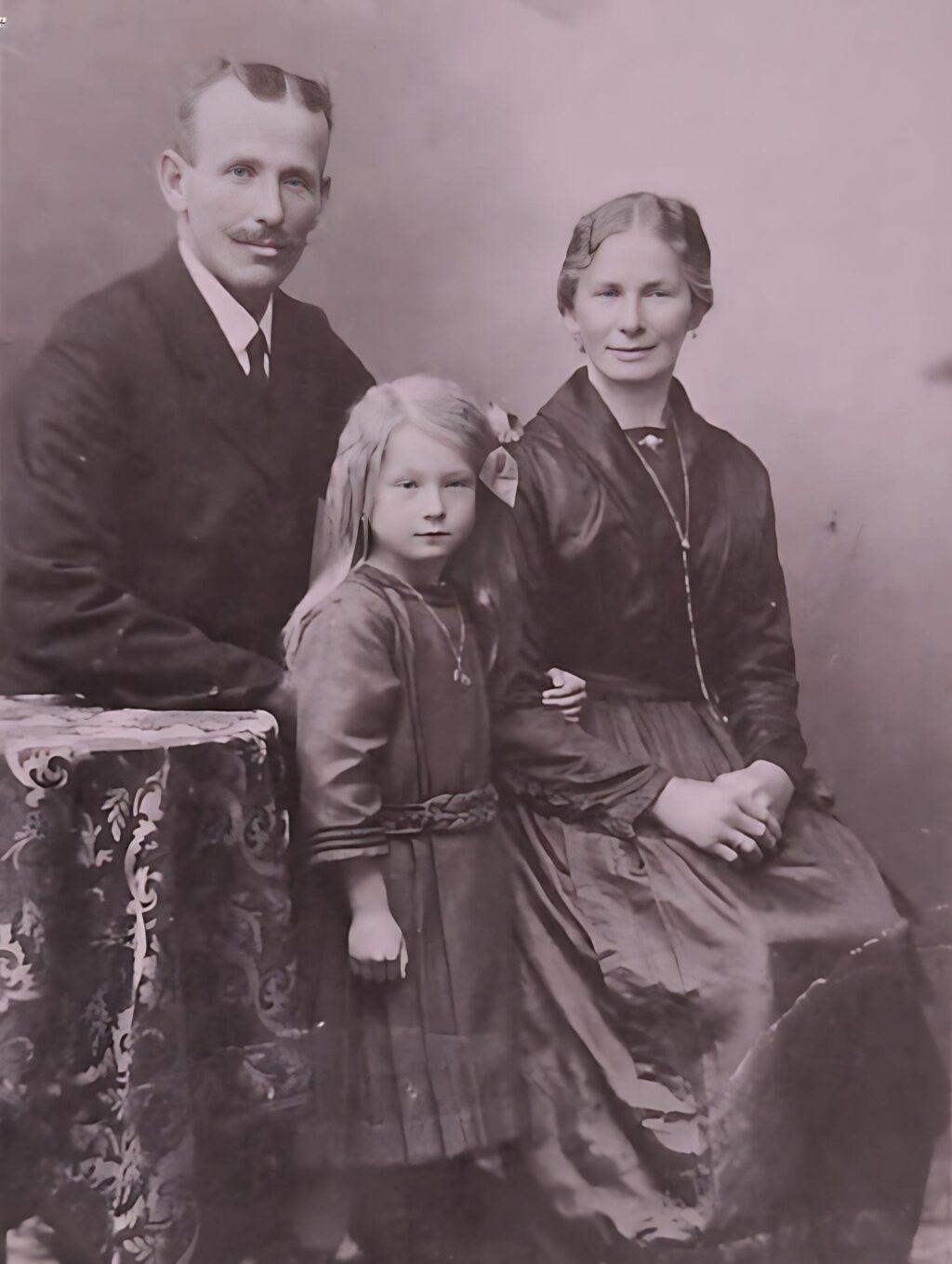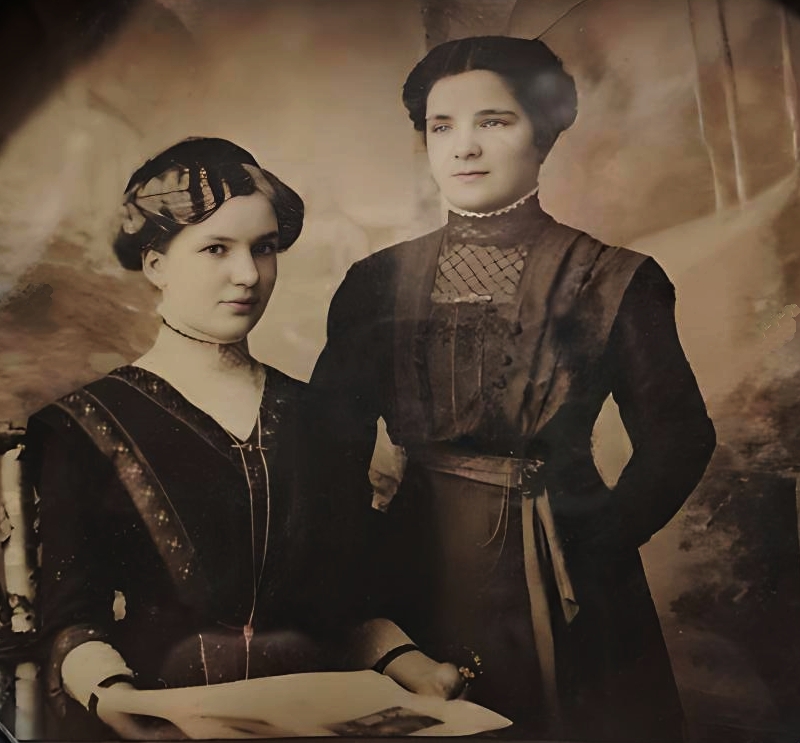The major project besides all the work in the electronics lab and mechanical workshop here has been the writing of the family chronicles and ancestry research, starting with my father’s side: the grandparents SCHRÖDLE and REITSAM. Now as the draft has been completed, I have put further thought to the publishing. The specialized contents won’t justify a large printing operation with many copies, so the book will be done by digital print rather than professional offset printing. Also, there may be some corrections necessary after the first print, therefore I don’t like to print to many pieces that then need to be corrected, but will only print the copies needed. Binding will be done by a spiral binding machine that I have recently purchased used, a heavy-duty version of a spiral binder that I have owned for years to make small “user manual” booklets and similar.
For the cover page, I thought it is a good idea to not only print it black and white, but to give it some nice appearance by gold print.
Golden letters can be printed by various means, but the best result is obtained by hot embossing. A heater metal (or special polymer stamp) is pushed into the paper, with a hot printing foil in between. The foil has multiple layers: a PET carrier, a layer of gold-colored aluminum, and a heat activated glue. Where heated the the embossing stamp, the foil will stick to the paper and the gold layer will transfer to the paper when the hot print foil is peeled off.
While the theory is easy, the challenge is to do the hot embossing in the home shop without a specialized machine. I have some experience with milling brass stamps that I have made for some friend years back, CNC milled. But with current case, I would need a 90×50 mm brass block, which I didn’t have in stock, so I took some hard aluminum alloy instead. Durability is no issue anyway, because I will need less than 100 copies anyway.
After preparing the stamp block (it will be directly heated by two 180 Watts 230 Volt heater cartridges, 10 mm diameter, 80 mm long), I set it up on my CNC mill to cut the letters. Don’t forget that all must be mirrored!
The program has many lines, but all no problem with LinuxCNC, which can handle machine programs of essentially any size.
First, roughing out the main parts, with a 3.8 mm endmill, 1.5 mm deep. You could also use a 2.5 mm endmill, but from experience, it is ok to just mill away the major gaps and cut the other areas by am engraver tool.
The fine engraving is done with an approx. 60 degrees engraving single-lip cutter. Surely, my CNC’s spindly is not fast enough for this, using about 2800 RPM where I should run at 10000, but the feeds were adjusted to roughly 140 mm/min, to get away with the “slow” rotation. The single-lip cutter (made from K30 tungsten carbide) is holding up well in hard aluminum and leaves a shiny cut even without any lubricant.
For a test print, I heated the metal stamp on a hot plate. It has some crude temperature regulation, so it is not difficult to control the temperature.
The supplies prepared: some pieces of paper (always use the actual paper you want to print on), some cut strips of heat printing foil (this foil I have purchased more than 20 years back, a mid-sized coil, many meters because it is petty thin), and a thermometer to sense the temperature of the block while heating (the green wire is the thermocouple).
The printing itself, I did on the print press. It is recommendable to print on a piece of thick paper or cardboard, to have a certain depth of the impression. You can also print on a flat and hard surface, but the result is then less impressive. Temperature, pressure and time need to be established by trial and error, say, 180-200 degrees centigrade, intermediate force, and just a few seconds are a good starting point. Too hot printing will damage the foil and paper, too cold printing will give bad transfer and low durability, too high pressure will give unclean corners and edges, and too long printing will result in transfer to areas that are not letters, leaving a “dirty” print. You can check with an eraser: a good hot embossing will not be affected by using a soft eraser on it. If the gold comes off, either the paper is not good, the temperature is too low, or you are not pressing hard enough.
At an angle, there is a nice reflection. This is printed with a semi-matte gold foil, I will also try a shiny reflective gold foil. But I guess my grandparents would have been happy with any style of gold print.








